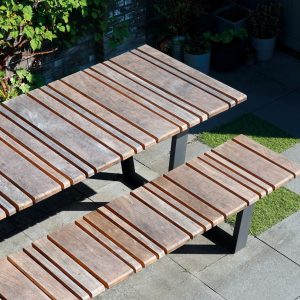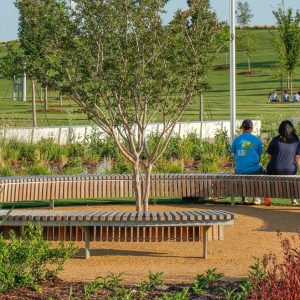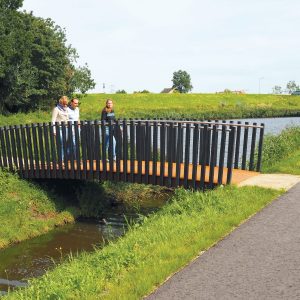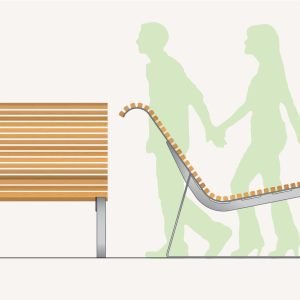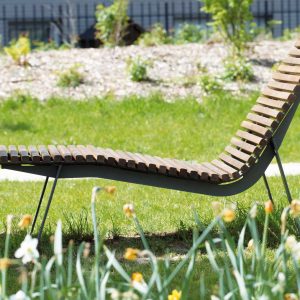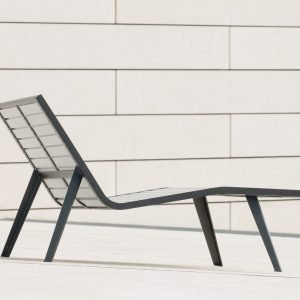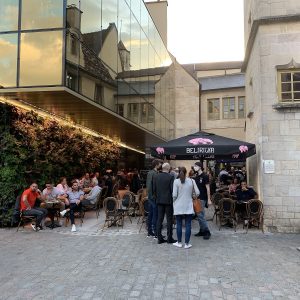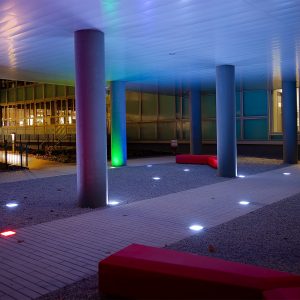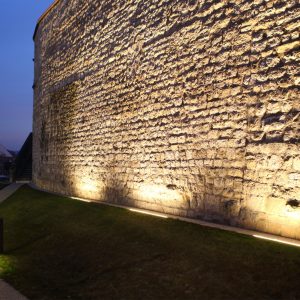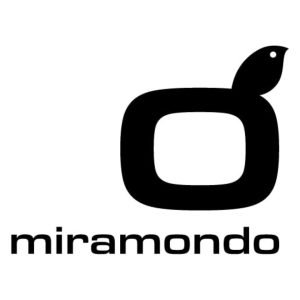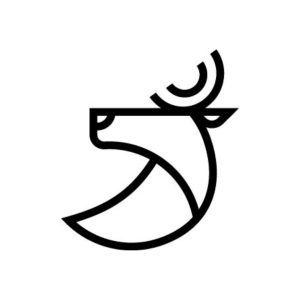Art Rethinking Nature: Giovanni Aloi

Giovanni Aloi is an author, curator, and creator with a PhD from Goldsmiths University, focusing on natural history in art representation. His work examines depictions of flora and fauna to uncover societal values and foster shifts in these through critical reflection. Through publishing, curating exhibitions, delivering talks, and editing Antennae: The Journal of Nature in Visual Culture, Aloi seeks to create space for reflection on human-nature relationships.
The conversation below delves into Aloi’s work and highlights emerging trends in contemporary views of nature.
First, can you briefly explain your interest in art representations of flora and fauna, and nature?
I have been interested in art, animals, and plants since I was a child. I was born in Milan, but my parents are from Calabria, in the deep south of Italy. We used to spend the summer months there. The animal and plant life was overwhelmingly rich and exuberant. My grandmother loved nature. She had over a hundred potted plants across her terrace and balcony. She firmly believed that plants were sentient and that they would express their love for her by “smiling back through the lushness of their leaves and blooms”. Her passion for animals and plants was infectious.
I think that if you love nature, you will never be bored and that when all else fails, there will always be a reason to carry on. Despite growing up in a working-class context, where resources were limited, my relatives nurtured a spontaneous and pronounced love for the natural world. I count myself lucky to be exposed to their influence.
As far as I can recall, art has also played a major role in my life. I always liked to draw and I became interested in art history from a very early age.
It took some time to combine my two passions into a professional practice but the emergence of animal studies in the early 2000s gave me the opportunity to do just that. The way we represent animals and plants says much about our relationship with them. Art is not just the manifestation of our ideas, but it also helps us to rethink, through expressive forms, our relationships with the more-than-human world. It is a tool we can use to de-objectify nature in order to reconnect with it. We can analyze our representations of animals to better understand what our core values and ideals are and we can adjust these representations to shift our values in response. I think it’s an incredibly valuable resource if used in an ethical and speculative way.
Themes where nature finds itself reframed, like posthumanism, the postnatural, human-nonhuman relationships, ecology, and anthropocentrism can be traced through art representations. What shifts have you observed in recent decades regarding Western perceptions of nature?
The past 30 years have seen a tremendous shift in the representation of nature in art. Beginning with the 1990s, the emphasis was primarily placed on institutional critique and deconstruction. Mark Dion, promoted a critical reconsideration of our objectifying approaches to the natural world through his installations comprising cabinets of curiosities and taxidermy. The paradox was clear: the natural history museum is in fact a mausoleum—the monumental manifestation of what went wrong with our relationship with the natural world. The rise of taxidermy in contemporary art, which I thoroughly explored in my book Speculative Taxidermy (Columbia, 2018) possibly represented the end of this long deconstructive process of critique. By the middle of the second decade of the new millennium, artists and other cultural makers started to turn to climate change and issues of decolonization.
I am still ambivalent about how this shift unfolded. I think the shift happened too quickly. It wasn’t clear from the start, for instance, that perhaps it wasn’t the job of those who originally colonized to also decolonize. Indigenous voices were slow to emerge, and when they did, the impetus of this change frequently fetishised and exploited them in ways that objectified them once more. The rise of Anthropocene studies in the humanities was certainly characterized by a sense of white-saviorism. That’s always problematic. But my biggest grievance about this moment is that many authors who gathered visibility in that context never seemed to really care about animals and plants. While animal-studies nurtured a dedicated, non-anthropocentric stance the climate-change discourse brought along a stark recentering of the human. In the discourses of many key “anthropocene authors”, ultimately, climate-change is mostly about us and social justice. Even the claims that “eco-justice is social justice” sound hollow and too generic to really bear any positive impact on the lives of those who already are experiencing the real cost of climate change. There’s plenty of good in this shift too, of course. But I am always very concerned with the performative aspect of academia, its virtue signalling, and ultimately lack of real action and impact.
I guess that one of the most positive shifts is that, throughout it all, artists have become more concerned with empathy. Their work often uncovers concealed layers of interconnectedness and instils a sense of wonder or hope in the natural world. In general, artists have moved away from the sublime aesthetics of past decades to focus on often near-imperceptible nuances. Moss, fungi, mold, lichens, slime, bacteria: the list is endless. The rise of critical plant studies in the early years of the 2010s has provided valuable opportunities to reconsider alterity, sentience, and intelligence in a more-than-human world. Here too, the focus on the vegetal world has allowed artists, as well as authors, to rethink their aesthetic strategies and contextual frameworks. As a result, we are much more aware of our ethical standings and responsibilities as practitioners. Our objectives and intentions are clearer as are our strategies. Everything is pervaded by a healthy sense of urgency.
As the founder and editor-in-chief of Antennae, The Journal of Nature in Visual Culture, you can give visibility to obscure and often underserved topics and artworks. The first issue came out in 2007 with at least three issues annually. Can you outline the journal’s tendencies, what do you see as the “future view on nature” based on how we see it now?
Antennae emerged as a true necessity. In 2007, artists and humanities scholars who focussed on the topic of animals and the environment were mostly sidelined by publishers and galleries. That situation was the result of longstanding Western tradition that saw nature as implicitly inferior to other subjects such as history, mythology, religion and ubiquitous nude (mostly female). The hierarchy of genres, which was theorised in the 17th century by Andre Felibien—an adapted, art historical translation of Aristotle’s scala naturae moulded the minds of editors and curators to the point that very little space was made available to pioneer a more-than-human revolution.
At the time, the internet had become readily widespread and programs like Dreamweaver enabled people to design websites fairly easily. I seized the opportunity and launched Antennae to create a free, academically grounded space where to pioneer ideas, approaches, and methodologies. We were independent, non-funded, and free to the public then and we still are today. And despite our very limited resources, we never have and never will charge authors to publish with us. Quite frankly, I think that’s immoral. The academic publishing world is corrupted to the bone. Authors should never be charged to publish their work.
Antennae is run by scholars and artists who volunteer their time. We are a community. We generate opportunities, amplify voices, and disseminate art and innovative thinking far and wide.
I can’t predict in which direction fields of inquiry will move but based on the submissions we receive, cultural diversity seems to be growing. Artists explore the more-than-human world in an ever-so-original and unscripted way. Artists inspired by animal-studies were perhaps informed too closely by the deconstructive philosophy of Derrida and the poststructural work of Deleuze and Guattari, especially. I see a less prescriptive approach right now. Less reliance on Western philosophy. More interest in Indigenous and folkloric conceptions, a heightened attention for and interest in materiality, and a propensity to embrace speculative dimensions.
You have edited and written a large number of books. Lucian Freud Herbarium uncovers his subtle relationship with plants, the domestic, potted, raw, attended, and humanised, and can quite well portray the relationship with oneself. Has the relationship to humans changed in accordance with the relationship to other sentient beings?
Yes, I think the shift in awareness is substantial. The rise of social media and the digitalization of our world might also in part be responsible. Not all technological applications are productive, as some posthuman thinkers would like us to believe. Many of us perceive a deep sense of alienation from the living world and are actively seeking ways of reconnecting with nature through art and other media. While throughout the last century being interested in nature has become optional, today, climate change has instilled some kind of ethical duty. I think more people realize that climate change is the result of our lack of appreciation for the natural world and that there cannot be a way back without a true reappraisal of our responsibilities and a real shift in attitudes. However, we still don’t seem to be resolutely committed to doing all we can in order to save our planet. That’s a very problematic aspect. It feels like we would need more time in order to see a more radical shift but time is what we don’t have.
- Lucien Freud, Interior with Plant, Reflection Listening (Self Portrait), 1967–68
Plants are one of the core material mediums of landscape architecture (while animals are often framed “as users”). The terms native, non-native, autochthonous, and invasive, prevail in the description of planting material and inform decision-making. Yet these terms are becoming obsolete, especially with climate change and the rising awareness of human production of nature. One interesting point of view describes native as: “everything that is present and found a footing in a place has as such, the right to be there regardless of their origin”. With reference to your recent lecture, Migrations: Tales of Uprooting, transplanting, and grafting, and your knowledge of critical plant studies, can you prescribe “new meanings” for the above terms?
I think that everything we say and do in the context of architecture and land art must be as specific as possible in relation to the history and ecological reality of a place. So, I am not convinced by the idea that “everything that is present and exists in a place” is native. The very idea of nativeness implies a more complex notion of “having been on a site prior to others”. The issue is with this “prior” of the native. How long does a species need to thrive in one place to be considered “native”? After how long can a non-native species become native?
A lot of the conversation about native species has unfortunately focused on metaphorical dimensions related to decolonization as if by replacing cultivars and other European plant species from American gardens we would also undo centuries of colonization. That’s too simplistic and tinged, again, by a sense of saviorism.
I am in favour of a position heralded by Michael Pollan which he termed the “cosmopolitan garden”, which according to the author reflects the histories of ecological and cultural cross-pollination that make up the world we live in today. What we call native species, often times require less water and fertilizers since they have adapted for millennia to live on the same land. However, climate change is far too rapidly impacting the soil and shifting the seasons in ways that catch native species of plants and animals unprepared. Therefore, putting what the land and the animals need first should become our priority. A balanced mix of autochthonous and introduced species that might sustain pollinators early in Spring as insects wake up too early from hibernation should take priority over aesthetics as well as purist notions of appropriateness. However, again, each situation should be carefully evaluated based on specific histories and ecological awareness.
What would you advise in terms of a reference to the design of nature to landscape architects? What book you wrote (or read) might inform landscape architects?
Why Look at Plants? was specifically structured around the idea that our relationship with plants is determined by architectural spaces: the house, the garden, the store, the greenhouse… this idea was inspired by Michel Foucault’s understanding of architectural spaces as epistemic spatializations. In a nutshell, knowledge of something can only be produced with some form of enclosure (whether a cage, room or the page of a book) and the nature of such enclosure ultimately will impact what we can see and say about its content. In this case, I wrote the core of the book and then invited artists, curators, art historians, and other practitioners to contribute short entries that expanded and enriched my original perspectives.
My essay, “Sorely Visible: Plants, Roots, and National Identity” explores the complex relationship between trees and public spaces in relation to the installation of banana and palm trees on one edge of Piazza del Duomo in Milan, Italy. I consider the role played by plant-politics and architectural aesthetics in constructing national identity and otherness. The work encompasses elements of environmental, anthropological, architectural, and art historical studies, to reveal important aspects of our relationship with plants, other people, and our past and future histories.
- Banana and palm trees at the Piazza del Duomo, Milan, Italy, 2018. Photograph: Giovanni Aloi
As you come from Italy (and an art historian), we must visit the Italian garden—one of the most beautiful examples of garden history can be found in Tivoli—Villa Adriana, and Villa d’Este. There are many extraordinary examples of modern and contemporary architecture but from afar, it seems Italian garden culture, is stuck in the Renaissance. Do you have any thoughts on how particularly in Italy the views and design of nature changed and what are the trends and some contemporary examples?
Geometric formalism became one of the quintessential features of Renaissance garden. The main aim was to impose the rationality of culture upon the exuberance of vegetal life. The inspiration was at least in part derived from Plato’s idea that God geometricizes. What better premise than to materialize this divine conception through the naturalizing power of gardening?
The geometrization of gardens also functions as an ostentatious expression of someone’s sheer wealth. Neatley trimmed edges, short shorn lawn, and topiary trees require constant care and maintenance. Most Italian gardens require the involvement of an army of gardeners to stay neat. More than others, this type of garden is entirely about the power of the landowner.
While it might seem that little innovation is taking place in Italy on the gardening/landscape design front, this is not entirely true. Designers are responding to the challenges posed by climate-change and sustainability. The Giardini di Pistola in Canale di Pirro, Puglia region, designed by Urquhart & Hunt, combine Mediterranean and English garden styles to prioritize sustainability over nativeness or aesthetics. By selecting plants that thrive in the local environment, designers can create lush, vibrant spaces that require less maintenance and water. One of the prominent figures in contemporary Italian garden design is Paolo Pejrone. Known for his ability to blend traditional Italian aesthetics with modern sensibilities, Pejrone’s work often emphasizes the harmony between architecture and nature. He is renowned for his use of native plants and sustainable practices, which reflect a deep respect for the environment and local ecosystems. Another influential designer is Luciano Giubbilei, whose gardens are celebrated for their elegance and minimalist approach. Giubbilei’s work often features clean lines, geometric shapes, and a restrained color palette, creating serene and contemplative spaces. His gardens are a testament to the power of simplicity and the importance of creating a dialogue between the garden and its surrounding landscape. Caterina Poli is a rising star in the field, known for her creative use of materials and textures. Her designs often incorporate elements like stone, water, and light to create dynamic and engaging outdoor spaces. Poli’s work is characterized by a strong sense of place and an ability to adapt to the unique characteristics of each site, making her gardens both distinctive and deeply connected to their environment. Lastly, Marco Bay is a designer who has gained recognition for his innovative approach to urban garden spaces. Bay’s work often focuses on transforming small or neglected areas into vibrant green spaces, emphasizing the importance of nature in urban settings. His designs are known for their lush plantings and imaginative use of space, which challenge traditional notions of what an Italian garden can be.
- Giardini Pistola in Puglia by Urquhart & Hunt, Photo by Conny Tedder
Published on November 25, 2024








